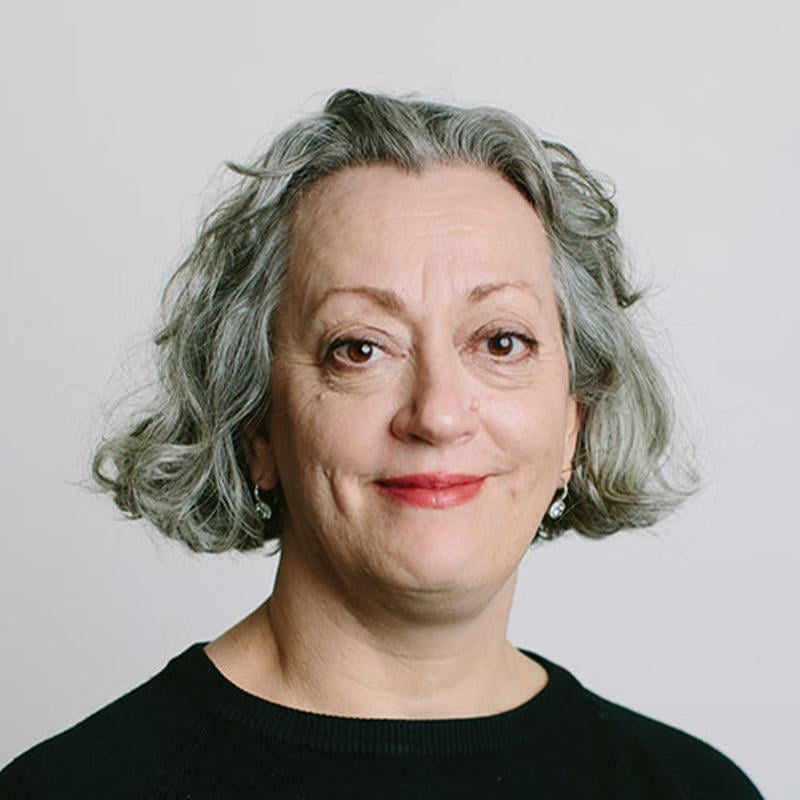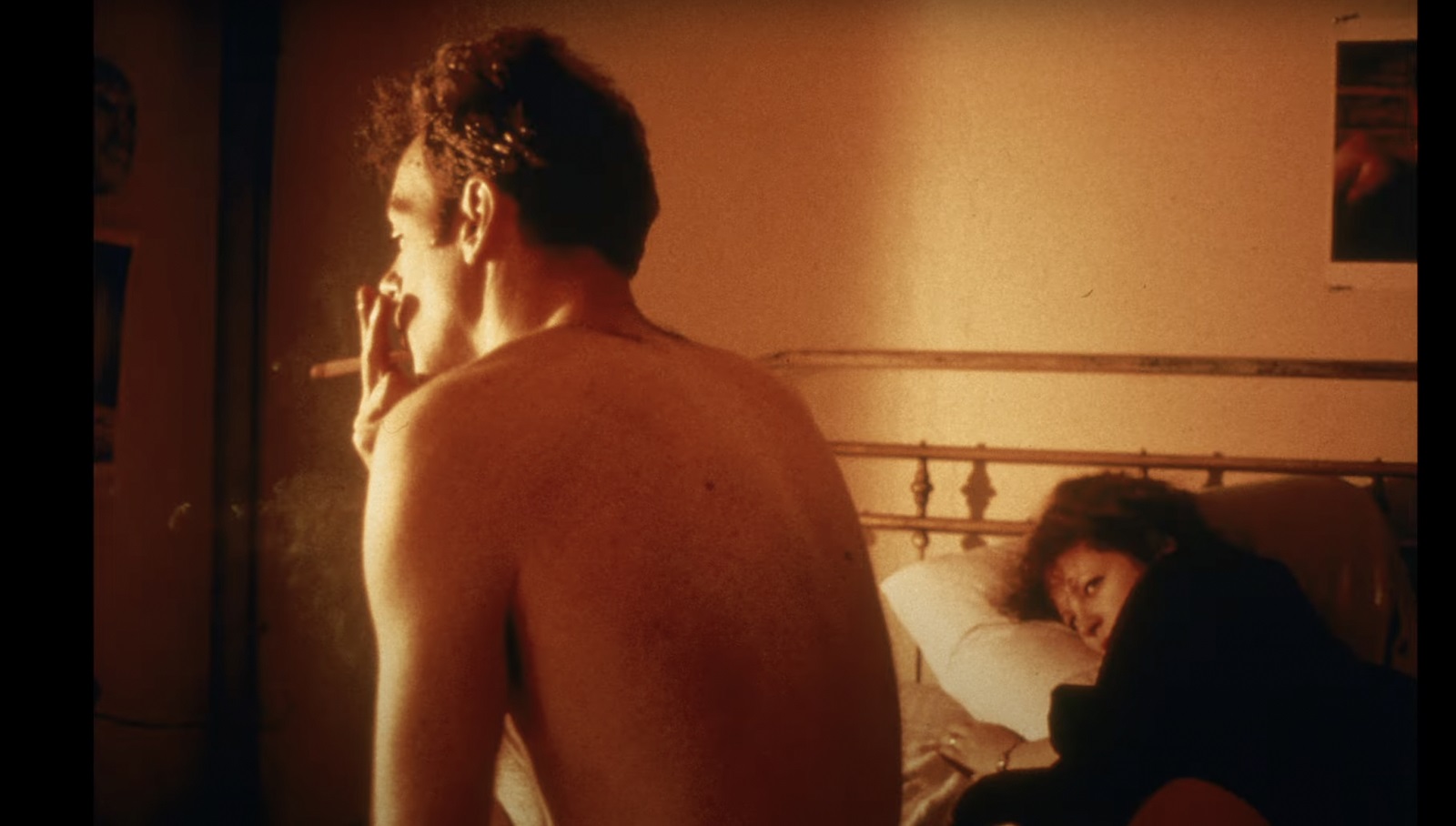For some folks, the artist Nan Goldin calls up a certain vintage of old New York: the Bowery district, circa the early ‘80s, when the fabulously raunchy denizens of the city lived, loved and raged, bright as Roman candles.
The decadence of the scene was famously documented in Goldin’s breakthrough 1986 book-length photography collection, The Ballad of Sexual Dependency. Goldin captured her friends, lovers and community in a series of 127 images that came to embody the period in all its raw and ragged excess. The Museum of Modern Art called it a “downtown opera” in which Goldin photographed people in riotous, full-spectrum humanity: loving and losing, using drugs and having sex, riding the subway, living through the AIDS crisis. It was a body of work that changed how people saw themselves and each other.
The impact of Goldin’s work from that era comes roaring back in director Laura Poitras’s stunning new documentary, All the Beauty and the Bloodshed.
Poitras (Citizenfour, Risk) marshals cultural history, biography and activism to create something much greater than a portrait of an artist and her work. Nan Goldin is certainly a significant artist, but she’s also an equally fearsome and potent agent of change.
Bloodshed could easily have been three or four different films. The story of Goldin’s childhood and coming of age is more than enough. Born Nancy Goldin to a conservative Jewish family in Silver Spring, Maryland, in a suburban enclave steeped in 1950s repression and silence, Goldin was the youngest of four children. As she states at the outset of the film, her parents cranked the record player so that the neighbours wouldn’t hear the sound of yelling in her household. But as she notes, it didn’t work.
Goldin’s older sister Barbara, a rebellious teenager, took the brunt of the family dysfunction. At age 14, her parents consigned her to an orphanage. She was in and out of different mental health institutions, until, at 19, she laid down in front of a commuter train on the tracks just outside of Washington’s Union Station. Goldin describes her sister’s death as “an act of immense will.”
After her sister died, 11-year-old Goldin retreated into near-muteness, although her shyness and silence didn’t translate into passivity. After being advised to leave her family home lest she too suffer a similar fate, Goldin bounced between foster homes and different schools before finding a place at Satya Community School, a progressive institution where students were allowed to determine the course of their own education. At Satya, Goldin started taking photographs and met fellow photographer David Armstrong, a young gay man who would become one of her closest friends. The necessary, life-saving affirmation of finding one’s people enabled Goldin to become an artist. It established a pattern that would repeat throughout her career.
At age 18, Goldin lived with a group of drag queens, documenting their daily life. This included visits to the Goodwill to buy donated Fortuny gowns, dressing up, and drunken picnics in the park. The influences of other photographers like Harry Horenstein and Larry Clark (of the “Tulsa and Teenage Lust” controversy) are readily evident in her early work. But Goldin’s commitment to a kind of radical transparency and acceptance soon took her into uncharted territory.
It’s easy to forget that prior to her exploding onto the art scene, photographers didn’t use their own lives as material for their work. Goldin not only documented her own experience but elevated it into a new kind of image making: primal, brutal and suffused with the ripe perfume of desire and transgression.
The Ballad of Sexual Dependency came into being originally as a slideshow set to music (the Velvet Underground, Nina Simone, among others), and featuring a shuffled cavalcade of photos of New York City’s demi-monde: rotten, raunchy, glittering with sex, drugs and the gossamer bubble of youthful immortality. As one interviewee recounts about seeing the presentation for the first time, they couldn’t really hear anything over people screaming in both horror and delight at the images of themselves and people they knew.
After its premiere at the 1985 Whitney Biennial, Goldin published Ballad as a book in 1986, despite competing campaigns from her family and ex-lover to quash it.
Of the many famous and not-so famous folk featured in Goldin’s work, Cookie Mueller remains one of the most compelling. Goldin met Mueller in the summer of 1976, when she rented a place in Provincetown. As she wrote in the introduction to her 1991 book Cookie Mueller, “She was a cross between Tobacco Road and a Hollywood B-Girl, the most fabulous woman I’d ever seen.”
Mueller came to a fame working with director John Waters, and later reigned over the downtown NY scene. She was an artist, a writer, a mother and all around iconoclast. One of Goldin’s most famous photographs is that of Mueller, lying in a state like a queen in her casket. Mueller and her husband Vittorio both died from AIDS within months of each other. Goldin documented both their funerals.
Almost 40 years after its publication, the images in Ballad still have the power to catch your breath in your throat. None more so than the photographs that Goldin took of herself after a brutal beating from her then-boyfriend Brian. Goldin had met the former marine, who would become both her muse and abuser, at the infamous lesbian bar Tin Pan Alley, where she was working as a bouncer.
As she recounts in the film, she was screening Ballad in Germany at the time and had left the slideshow presentation at the venue. Otherwise it too would have been destroyed by Brian along with her journals. In an effort to blind her, her former lover broke multiple bones in her face. Goldin returned to the U.S. to have surgery to save her sight. The image of her blackened and bruised face in Ballad (“Nan one month after being battered,” 1984) still have the power to shock with their savage, almost unbearable, honesty.
And that’s just the opening third of the film.
Goldin’s involvement with Prescription Addiction Intervention Now and her activism forms the latter sections of the story. Goldin founded PAIN after losing many friends and lovers to addiction, as well experiencing her own opiate overdose. This razored edge of personal suffering galvanized her campaign against the notorious Sackler family. The Sacklers founded Purdue Pharma, the makers of the opiate OxyContin, whose prescription and misuse has been at the root of drug-related deaths and lives transformed by addiction across the United States.
The different campaigns orchestrated against the Sacklers took inspiration from the activism of the 1980s, when ACT UP orchestrated similar actions designed to bring attention to the fact that an entire generation of people was in the midst of dying of AIDS. Some of the tactics adopted by PAIN came from the work of Goldin’s friend and fellow artist David Wojnarowicz (known for The Killing Machine Called America).
The correlations between lives lost to AIDS and the current epidemic of toxic drug deaths is not lost on Goldin. In the documentary, Poitras captures the campaign against the galleries and museums that took Sackler money in a series of scenes that play out like a spy caper as the activists assemble, slip past security and give the signal to unfold banners, toss pill bottles or fall to the floor in a simulated die-off.
In one remarkable scene, members of PAIN blanket the Guggenheim’s vaulted auditorium with leaflets that rain down like a virtual blizzard, a reference to Purdue Pharma’s marketing of OxyContin that stated: “The launch of OxyContin tablets will be followed by a blizzard of prescriptions that will bury the competition. The prescription blizzard will be so deep, dense and white.”
The Metropolitan Museum, the Louvre, the Tate and the Guggenheim were among the high-profile galleries and cultural institutions who received large donations from the Sackler Family for naming rights. The term art-washing isn’t quite sufficient to represent the vast amounts of money spent to redeem the family’s name and legacy.
New Yorker writer Patrick Radden Keefe, who investigated the Sackler fortunes in 2017 in his exhaustive article “The Family Who Built an Empire of Pain,” provides additional context in the documentary, as well substantiating Goldin’s assertions that the Sacklers kept anyone involved with efforts to reveal their activities under secret surveillance.
If ever there was a human not to be fucked with, it is Nan Goldin. Having lived enough for several lifetimes and witnessed more death than anyone should have to endure, Goldin made it her personal mission to bring down the Sacklers.
Poitras captures things in the heat of the moment, from meetings with the members of PAIN as they strategize, to Goldin offering her testimony as part of a series of victims’ statements to members of the Sackler family. This extraordinary moment in the film, mandated by a landmark hearing in the U.S., required members of the Sackler family to listen and bear witness to the agonizing losses suffered by so many people. Even as she is shaking with nerves, Goldin’s statement to the family is clear and utterly damning.
It’s a reminder that the work of artists can be much more than marketing, money and profile. As Goldin remarks, her actions might kill her career, but she does it anyway.
The film is dedicated to Goldin’s sister Barbara. In some curious way, the seeds planted by her death found flower decades later not only in Goldin’s art, but also in her commitment to telling the truth, however painful and brutal.
The potent forces of pathos and madness that come full circle in the lives of great artists are made explicit in the film’s final coda.
Tucked within these summary scenes is something else. It is too simple to call it redemption. More like a bloodied, battered and ultimately beneficent kind of grace.
‘All the Beauty and the Bloodshed’ runs at the VIFF Centre in Vancouver to Dec. 15. ![]()
















Tyee Commenting Guidelines
Comments that violate guidelines risk being deleted, and violations may result in a temporary or permanent user ban. Maintain the spirit of good conversation to stay in the discussion.
*Please note The Tyee is not a forum for spreading misinformation about COVID-19, denying its existence or minimizing its risk to public health.
Do:
Do not: